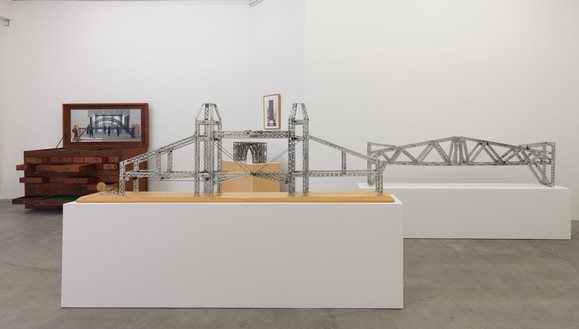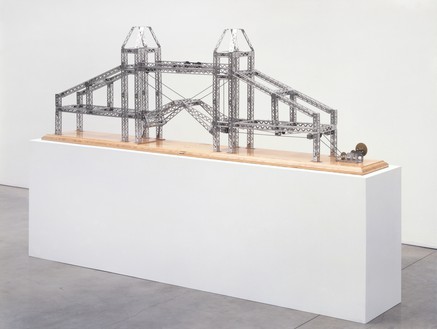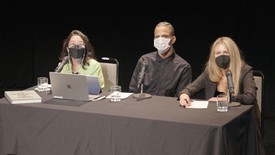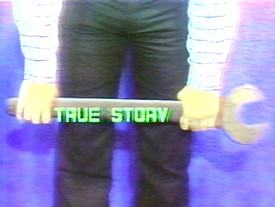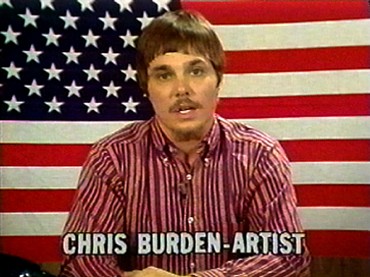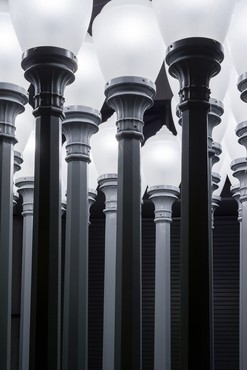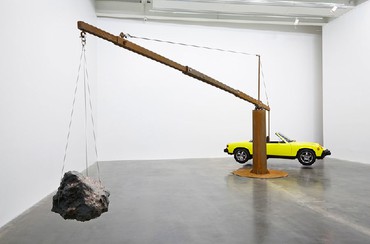About
As a sculptor, I’m interested in architecture, and I’ve made artworks that are literally architectural. All buildings can be converted: a church can become a nightclub. What I like about bridges as a kicker is that a bridge’s function is extremely pure and clear. Yet, if you look through the history of bridges, the solutions are infinite.
—Chris Burden
Gagosian is pleased to present a selection of Chris Burden’s small-scale bridges at Park & 75, in tandem with the large-scale installation Buddha’s Fingers currently on view at 980 Madison Avenue.
In 1997, compelled by a drawing of an unrealized iron bridge from the nineteenth century, Burden created The 1/4 Ton Bridge from vintage Meccano and Erector sets. This first work in what would become an ongoing series dissolved the distinction between sculpture and structure: the bridge had to support five hundred pounds before it could be deemed complete—and it did. Grasping the mechanics of proportion and weight, with Antique Bridge (1998) Burden tackled the structure gracing the cover of vintage Erector manuals with the bulky drama of the Mysto Type I Erector. When parts became scarce, he commissioned stainless-steel replicas of the Mysto Type I Erector to resist rust and corrosion, and to allow the series to continue. Indo-China Bridge (2002), Tower of London Bridge (2003), and Victoria Falls Bridge (2003) were created with these remastered components. The availability of materials thus sparked a shift in Burden’s distribution: he began generating multiple editions of the bridges in conjunction with the unique version. Tyne Bridge Kit (2004) reflects this impulse: in a rustic wooden cabinet reside two hundred thousand specially made pieces (tools and instructions included) that enable the 31-foot model of the Tyne Bridge, first constructed in 2002 for the Baltic Centre for Contemporary Art in Gateshead, England, to be recreated. Combining industrial ingenuity and childhood whimsy, Burden’s bridges comprise the very material that fuels his imaginative precision.
Buddha’s Fingers (2014–15) is a dense cluster of thirty-two antique cast-iron vernacular street lamps, electrified with cool, bright LED bulbs and standing almost twelve feet tall. The work is related to Urban Light (2008), Burden’s celebrated permanent installation of 202 lamp posts, which stands at the entrance to the Los Angeles County Museum of Art. In 2000, Burden began collecting the street lamps that used to line residential streets in Los Angeles during the 1920s and 1930s, repurposing them as sculptural installations. In Buddha’s Fingers, the hexagonal lamp bases are set in a tight honeycomb formation. The whimsical title refers to the fingered citrus fruit, a recurrent still-life motif and subject in classical Asian art, and a religious symbol of happiness, longevity, and good fortune.
Beginning with a series of startling actions in the early 1970s, Burden challenged his own mental and physical limitations, as well as the boundaries of art and performance. Shut inside a locker for five days (Five Day Locker, 1971), shot in the arm (Shoot, 1971), and nailed through the palms of his hands to the roof of a car (Trans-fixed, 1974), he sought to reflect the violence that defined American politics, society, and media at the time. Burden soon channeled the daring spirit of these early performances into imposing technical feats that similarly explored challenges both individual and social. He uses toys (figurines, train sets, Erector parts) as the building blocks for expansive scale models of buildings, dystopic cities, and battlefields, while deploying actual vehicles (ships, trucks, and cars) in surreal and improbable ways.
Share
In Conversation
American Artist, Yayoi Shionoiri, and Sydney Stutterheim on Poetic Practical: The Unrealized Work of Chris Burden
Join Gagosian to celebrate the publication of Poetic Practical: The Unrealized Work of Chris Burden with a conversation between American Artist, Yayoi Shionoiri, and Sydney Stutterheim presented at the Kitchen, New York. Considering the book’s sustained examination of sixty-seven projects that remained incomplete at the time of Burden’s death in 2015, the trio discuss the various ways that an artist’s work and legacy live on beyond their lifetime.

At the Edge
Chris Burden: Prelude to a Lost Performance
Michael Auping tells the Quarterly’s Alison McDonald about the preparations for a performance by Chris Burden at the Newport Harbor Art Museum in Southern California in 1974—and the event’s abrupt cancellation—providing a glimpse into the mindset of a young, aggressive, and ambitious artist in the early stages of his career.
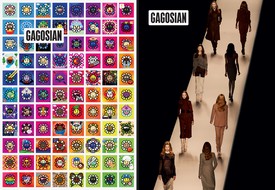
Now available
Gagosian Quarterly Summer 2022
The Summer 2022 issue of Gagosian Quarterly is now available, with two different covers—featuring Takashi Murakami’s 108 Bonnō MURAKAMI.FLOWERS (2022) and Andreas Gursky’s V & R II (2022).

Chris Burden: Poetic Practical
A new publication exploring the work that Chris Burden conceived but left unrealized delves into his archive to present sixty-seven visionary projects that reveal the aspirations of this formidable artist. The book’s editors, Sydney Stutterheim and Andie Trainer, discuss its development with Yayoi Shionoiri, executive director of the Chris Burden Estate.
Gagosian Quarterly Films
Chris Burden: Big Wrench
From January 23 to February 21, 2019, Gagosian Quarterly presented a special online screening of Chris Burden’s 1980 video Big Wrench.
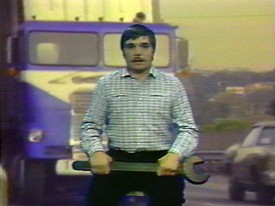
Big Wrench
Sydney Stutterheim looks at the brief but feverish obsession behind this 1980 video by Chris Burden.


